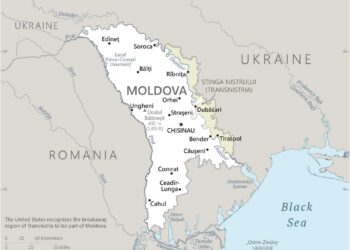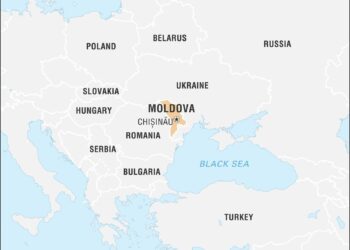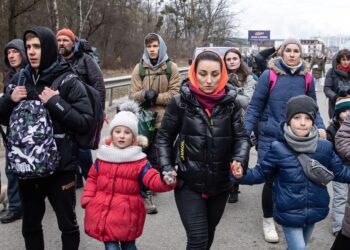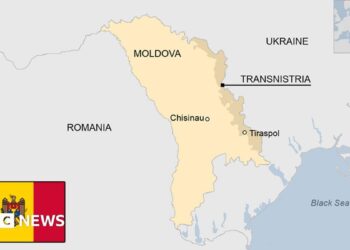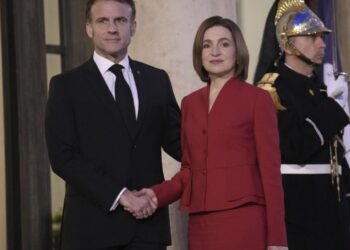Unfreezing Transnistria? A New Analysis by the Clingendael Institute
Transnistria, a narrow strip of land nestled between Moldova and Ukraine, has long remained one of the most intricate and enduring frozen conflicts in Europe. This self-declared republic, which broke away from Moldova in the early 1990s, operates as a de facto state with its own government and military, yet is largely unrecognized internationally. Recent geopolitical shifts, driven by tensions in the region and evolving international dynamics, have reignited discussions about the future of Transnistria and its potential reintegration into Moldova. In this insightful article by the Clingendael Institute, we delve into the complexities of the Transnistrian situation, exploring the ancient context, the key players involved, and the potential pathways towards resolution. As diplomacy grapples with the realities of a post-pandemic world, understanding transnistria’s status becomes increasingly critical—not just for Moldova, but for the broader stability of Eastern Europe.
Unpacking the Historical Context of Transnistrias Frozen Conflict

The historical roots of the conflict in Transnistria can be traced back to the complex interplay of ethnic identities and territorial claims that emerged during the collapse of the Soviet Union. The region, which declared independence from Moldova in 1990, is primarily populated by Russians and Ukrainians, leading to a distinct cultural and political identity that diverges from the majority moldovan population. Key factors influencing the frozen status of this conflict include:
- Geopolitical Significance: Transnistria serves as a buffer zone between the EU and Russia,making any resolution of the conflict crucial to regional stability.
- International Recognition: The absence of recognition from major global players means that Transnistria’s status remains ambiguous, complicating diplomatic efforts.
- Russian Influence: Russia’s military presence and support for Transnistrian authorities reinforce a status quo that deters considerable negotiations.
The ongoing stalemate is exacerbated by a lack of political will from both Moldova and the self-proclaimed Transnistrian leadership to engage in meaningful dialog. International efforts, largely orchestrated through the OSCE, have sought to mediate and promote peace, yet obstacles remain. Important considerations include:
| Consideration | description |
|---|---|
| Security Guarantees | Any agreement must address security concerns of both parties to prevent renewed hostilities. |
| Economic Challenges | Transnistria’s integration is dependent on economic incentives that can stabilize the region. |
| Public sentiment | Finding a solution requires addressing the aspirations and fears of the local population on both sides. |
Strategic importance of Transnistria in Regional Security Dynamics

The situation in Transnistria serves as a critical flashpoint in the security landscape of Eastern Europe. Nestled between Moldova and Ukraine, this unrecognized territory hosts a significant Russian military presence, which is instrumental in maintaining the status quo. The region’s stability—or lack thereof—has implications that reverberate across neighboring countries, highlighting the fragility of peace in a post-Soviet context. Key points include:
- Geopolitical significance: Transnistria’s location makes it a potential corridor for Russian influence into Moldova and further into the Balkans.
- military Dynamics: The presence of Russian troops, along with fragmented armed groups, poses challenges for regional security initiatives.
- International Interests: Western interest in Moldova’s EU aspirations and security stability makes the Transnistrian issue a matter of strategic urgency.
Additionally, the dynamics of energy security, trade routes, and local ethnic identities play a pivotal role in the regional equation. Moldova’s efforts to strengthen its sovereignty face obstacles in the form of economic dependency on both Russia and the European Union, further complicating the resolution of Transnistria’s status. Notable aspects include:
| Factor | Impact on Security |
|---|---|
| Russian military Presence | increases regional tensions and complicates Moldova’s integration efforts. |
| Energy Dependency | Weakens moldova’s negotiating position with external actors. |
| ethnic Composition | Heightens the likelihood of internal conflict and separatist movements. |
Economic Incentives for Engaging with the Transnistrian Territory
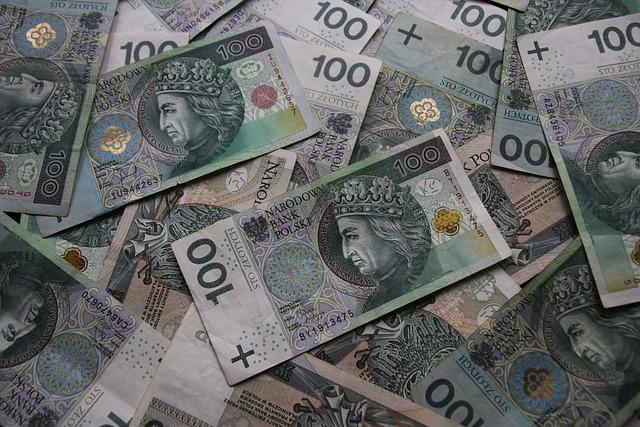
The economic habitat in Transnistria presents a unique chance for investment and engagement,especially for those willing to navigate its complexities. With a limited international recognition, the region possesses characteristic traits that can be exploited to foster economic growth.Key incentives for engaging with the territory include:
- Low Production Costs: Companies can benefit from considerably lower labor and operational costs compared to neighboring markets.
- Tax Incentives: The Transnistrian government offers various tax reductions for foreign investments, creating a favorable atmosphere for new businesses.
- Strategic Location: Positioned between Ukraine and Moldova,Transnistria serves as a vital transit point for goods moving across the region.
- Growing Economic Sectors: Areas such as IT, agriculture, and manufacturing are ripe for investment, with potential incentives for innovative startups.
Furthermore, engagement in Transnistria could pave the way for increased political and economic stability, both for the territory itself and surrounding nations. By forming partnerships with local enterprises, investors can contribute to sustainable development while enjoying the following benefits:
| Benefit | Description |
|---|---|
| Market Diversification | Access to a new consumer base with unmet demand. |
| Innovation Opportunities | Cooperation with local talent to foster innovation. |
| Export Growth | Potential to tap into new regional markets. |
Building Trust through Inclusive Dialogue and Confidence-Building Measures

Establishing a foundation of trust in delicate regions like Transnistria necessitates an approach that prioritizes open communication and inclusivity.Initiating dialogues that involve all affected parties can definitely help break down entrenched barriers and foster mutual understanding. By emphasizing clarity,stakeholders are encouraged to voice their concerns and aspirations,leading to a more comprehensive grasp of the region’s complexities. Key strategies might include:
- Workshops and Forums: These platforms can facilitate face-to-face interactions among diverse groups.
- Regular Updates: Keeping the public informed reduces uncertainty and builds confidence in the negotiation process.
- Community Engagement: Involving local entities to identify grassroots issues can align broader strategies with actual needs.
Implementing confidence-building measures requires tangible actions to demonstrate commitment to peaceful coexistence. Such measures can include joint community projects and socioeconomic initiatives aimed at creating interdependence among competing groups. These acts not only empower local populations but also portray a united front towards achieving a sustainable resolution. A few potential programs could comprise:
| Program | Objective |
|---|---|
| Cross-Border Employment Initiatives | Promote economic cooperation and reduce unemployment. |
| Cultural exchange Programs | Foster understanding through shared heritage and values. |
| Joint Environmental Projects | address common ecological concerns collaboratively. |
Policy Recommendations for European Union and International stakeholders
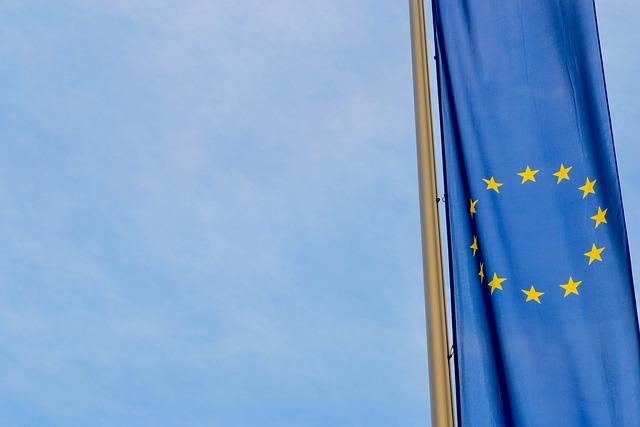
To effectively address the protracted conflict in Transnistria, it is imperative for the European Union and international stakeholders to adopt a multifaceted strategy. A first step could involve enhancing diplomatic engagement through regular dialogue with key players, including Moldova, Transnistrian authorities, and relevant neighboring states. This dialogue should emphasize confidence-building measures aimed at reducing tensions and fostering cooperation. Additionally,stakeholders should support institutional development in Transnistria,enabling the establishment of more robust governance structures that adhere to democratic principles. This can facilitate the region’s integration into broader European frameworks, promoting stability and prosperity.
Moreover, it is essential to leverage economic incentives to encourage reform and cooperation. A targeted approach could include aiding economic development in Transnistria through direct investments, trade partnerships, and access to EU markets. Such initiatives could be complemented by programs aimed at enhancing social cohesion and cultural exchange, fostering a sense of community among the diverse population. In conjunction with these economic efforts, the EU must remain vigilant against external influences that may exacerbate divisions, underscoring the importance of geopolitical stability in the region.
Envisioning a Path Forward: Scenarios for Transnistrias Future

The future of Transnistria remains uncertain, yet several potential scenarios can be envisaged that reflect the aspirations of its inhabitants and the geopolitical dynamics of the region. One possibility is increased autonomy within the Republic of Moldova, allowing Transnistria to maintain its distinct identity while benefiting from economic cooperation. Such a scenario woudl hinge on key diplomatic actions, including:
- Strengthened dialogue between Moldova and Transnistria, addressing historical grievances.
- International mediation to facilitate consensus and foster mutual trust.
- Regional economic partnerships that promote trade and investment in the area.
Conversely, the region could drift further towards integration with Russia, especially if the geopolitical landscape shifts. This would likely involve Transnistria solidifying its existing ties with Moscow, perhaps leading to formal annexation. This scenario could encompass:
- Increasing military presence from Russia to bolster security and influence.
- Promotion of Russian culture and language within the region,enhancing its connection to the kremlin.
- A potential resurgence of economic dependency on Russian investments and energy resources.
| Scenario | Pros | Cons |
|---|---|---|
| Increased Autonomy | Encourages peace; economic development | Possible political instability |
| Integration with Russia | Stronger security; economic aid | Loss of sovereignty; conflict potential |
Key Takeaways
the complex geopolitical landscape surrounding Transnistria demands a nuanced understanding of both historical context and contemporary dynamics. The insights provided by the Clingendael Institute highlight the intricate interplay of regional aspirations and international interests that shape the future of this unrecognized territory. As stakeholders engage in dialogues to navigate the path forward, the challenge remains: can a peaceful resolution be achieved that respects the desires of Transnistria’s diverse population while fostering stability in Eastern Europe? The coming months will be crucial, as developments in the region may either pave the way for rapprochement or further entrench the divisions that have long characterized Transnistria’s existence. As the world watches, the fate of this frozen conflict hangs in the balance, a testament to the complexities of post-Soviet geopolitics.



